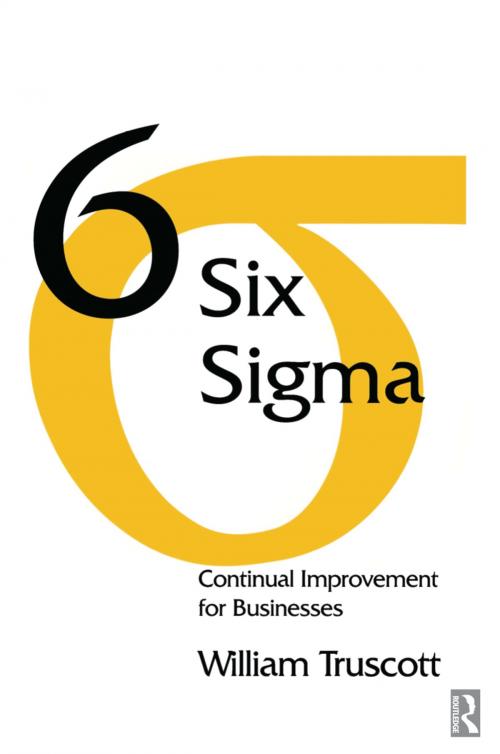| Author: | William Truscott | ISBN: | 9781136366437 |
| Publisher: | Taylor and Francis | Publication: | May 4, 2012 |
| Imprint: | Routledge | Language: | English |
| Author: | William Truscott |
| ISBN: | 9781136366437 |
| Publisher: | Taylor and Francis |
| Publication: | May 4, 2012 |
| Imprint: | Routledge |
| Language: | English |
There are a number of distinctive features of this book that makes it different from other on Six Sigma.
It recognizes that there are two diametrically opposing views expressed on Six Sigma, those that are strongly in favour, and those that are not, for various reasons. The book deals, head on, with the principle reasons for such hostility. It cuts through the hype associated with the brand name. It proposes simple remedies for certain defined frailties in the standard approach, particularly those related to the Sigma Measure that provides the brand name for the Six Sigma breakthrough strategy.
The book is highly supportive of the Six Sigma continuous improvement process, provided it is tailored to the needs and expectations of a particular organization. The commitment and active participation of top management is emphasized, to ensure the necessary change in culture and priorities demanded, in most organizations.
Practical guidance is given in the setting up, operating and developing the project by project approach across an organisation. The book also covers how to equip a critical mass of members in an organization with the core workforce competencies required to get the desired results.
The book covers the realities of applying Six Sigma in a range of functions within an organization and also to various types of organizations from the manufacturing sector to commerce and public service. It demonstrates how statistical thinking, coupled with the application of technical and operational knowledge of processes and focus provided by Six Sigma, can considerably enhance quality, competitiveness, effectiveness and efficiency.
Statistical process control is a tool, which enables both manufacturers and suppliers to achieve control of product quality by means of the application of statistical methods in the controlling process. This book gives the foundations of good quality management and process control, including an explanation of what quality is, and control of conformance and consistency during production. The text offers clear guidance and help to those unfamiliar with either quality control or statistical applications and coves all the necessary theory and techniques in a practical and non-mathematical manner. This book will be essential reading for anyone wishing to understand or implement modern statistical process control techniques.
There are a number of distinctive features of this book that makes it different from other on Six Sigma.
It recognizes that there are two diametrically opposing views expressed on Six Sigma, those that are strongly in favour, and those that are not, for various reasons. The book deals, head on, with the principle reasons for such hostility. It cuts through the hype associated with the brand name. It proposes simple remedies for certain defined frailties in the standard approach, particularly those related to the Sigma Measure that provides the brand name for the Six Sigma breakthrough strategy.
The book is highly supportive of the Six Sigma continuous improvement process, provided it is tailored to the needs and expectations of a particular organization. The commitment and active participation of top management is emphasized, to ensure the necessary change in culture and priorities demanded, in most organizations.
Practical guidance is given in the setting up, operating and developing the project by project approach across an organisation. The book also covers how to equip a critical mass of members in an organization with the core workforce competencies required to get the desired results.
The book covers the realities of applying Six Sigma in a range of functions within an organization and also to various types of organizations from the manufacturing sector to commerce and public service. It demonstrates how statistical thinking, coupled with the application of technical and operational knowledge of processes and focus provided by Six Sigma, can considerably enhance quality, competitiveness, effectiveness and efficiency.
Statistical process control is a tool, which enables both manufacturers and suppliers to achieve control of product quality by means of the application of statistical methods in the controlling process. This book gives the foundations of good quality management and process control, including an explanation of what quality is, and control of conformance and consistency during production. The text offers clear guidance and help to those unfamiliar with either quality control or statistical applications and coves all the necessary theory and techniques in a practical and non-mathematical manner. This book will be essential reading for anyone wishing to understand or implement modern statistical process control techniques.















